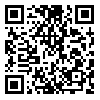BibTeX | RIS | EndNote | Medlars | ProCite | Reference Manager | RefWorks
Send citation to:
URL: http://ibj.pasteur.ac.ir/article-1-1870-en.html
Background: Phototherapy is believed to be a safe method for the management of hyperbilirubinemia. However, there are some controversial issues regarding the genotoxic effects of phototherapy on DNA. The aim of this study was to investigate morphologically both phototherapy-induced DNA double-strand breaks (DSBs) and apoptosis in lymphocytes derived from jaundiced and non-jaundiced neonates. Methods: Newborns were divided into three groups, including phototherapy-treated (PT, n=30) jaundiced newborns with total serum bilirubin (TSB) levels >15 mg/dl, non-treated jaundiced newborns (C+, n=27), as positive, as well as healthy negative (C-, n=30) controls with TSB levels ranging from 10 and 15 mg/dl and less than 5 mg/dl, respectively. Lymphocytes were isolated from whole blood samples by Ficoll-isopaque density gradient centrifugation and then assessed for DNA damage and apoptosis before and 24 hours after incubation at 37°C in 5% CO2 using the neutral comet assay. Results: DSB levels were significantly much higher in the PT group compared to the controls before incubation but decreased remarkably after the incubation period. As expected, no statistical differences were found between the two control groups before and after incubations. The frequency of apoptotic cells showed no significant differences among all the three groups before incubation; however, it was significantly increased in the PT group after incubation. Conclusion: It seems that phototherapy in jaundiced infants is able not only to induce apoptosis in newborn lymphocytes but also to affect indirectly DNA integrity.
| Rights and permissions | |
 |
This work is licensed under a Creative Commons Attribution-NonCommercial 4.0 International License. |








.png)
